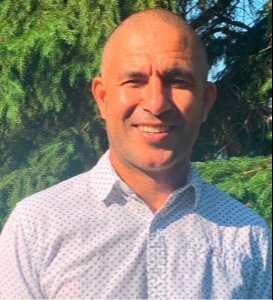Webinar | Data Integration in Environmental Science
In today's data-driven world, decision-makers in environmental monitoring require seamless solutions that transform raw data from multiple sources into actionable insights. This presentation introduces a custom, open-source platform designed to automate the entire data pipeline, ranging from ingestion and integration to analysis and decision-making. By unifying data from diverse sources such as field sensors, GIS, and historical datasets, this platform overcomes the challenges posed by siloed applications, offering a centralized and secure environment for comprehensive environmental data management.
With its automated workflows, the platform streamlines data ingestion and processing, providing consistent, real-time insights while minimizing human intervention and the risk of errors. Key features include advanced GIS capabilities, predictive analytics, and an intuitive interface that ensures rapid adoption across teams. Scalable and cost-effective, the solution is also built with robust security measures to safeguard sensitive information.
This presentation will showcase live interactive demos of multiple apps developed for various clients, diving into the platform's architecture, integration, and automation benefits. This tailor-made solution enables organizations to make more informed, proactive decisions in the ever-evolving field of environmental monitoring. The platforms are built using open data science open source (R and Python).
Brought to you by the Calgary Branch. Everyone is welcome to attend.
For any questions about this event, please contact [email protected].
About the Presenter
 Khalid Lemzouji is a professional statistician and data scientist with 16 years of experience in statistics, data analytics, and data visualization in the Alberta oil and gas and environmental sector. His main experiences have been working with executives and decision-makers to leverage their data for defensible, data-driven decision making through automating:
Khalid Lemzouji is a professional statistician and data scientist with 16 years of experience in statistics, data analytics, and data visualization in the Alberta oil and gas and environmental sector. His main experiences have been working with executives and decision-makers to leverage their data for defensible, data-driven decision making through automating:
- data collection: from field, lab, or sensors
- data storage: processing, cleaning, standardizing, and storing
- statistical modeling: modeling, correlations, predictions, and hypothesis testing
- communication: graphs, plots, and trends for easy-to-understand visualization
Khalid’s experience includes data integration and automation for Alberta oil companies (Suncor, Enbridge, Imperial, Stantec, TC energy) and Alberta environmental industry (Worley, Matrix Solutions, Stantec, Alberta Environment and First Nations).
Khalid has a double bachelor’s in statistics and chemical engineering and a master in statistics/mathematics from the University of Alberta. Khalid is a professional statistician with the Canadian Society of Statistics and the American Statistical Society.
